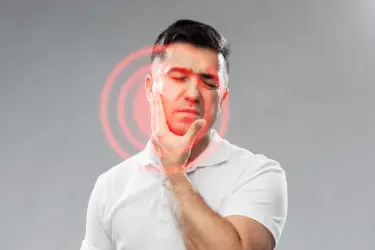
Temporomandibular joint dysfunction (TMD) refers to a group of conditions affecting the jaw joint and the muscles involved in jaw movement. These disorders can cause pain, impaired function, and a range of symptoms, including popping or clicking sounds, difficulty opening the mouth, pain while chewing, ear pain, and even tinnitus. Given the complexity of TMD, understanding its causes, classifications, and management is crucial for providing effective treatment and improving patients’ quality of life.
TMD can arise from a variety of factors, often involving the joint, muscles, or surrounding tissues. Key causes include:
Overuse or muscle strain in the jaw muscles.
Genetic predisposition to pain sensitivity or joint structure anomalies.
Affects any joint, causing inflammation and damage in the joints or the tissues around the joint or connective tissues.

Physical injury to the jaw or head.
Stress, anxiety, and other psychological factors can lead to muscle tension.
Patients with health conditions affecting one or more of the body’s systems are at higher risk.

Symptoms: Muscle tenderness, aching pain, and trigger points (sensitive spots in muscles).

Symptoms: Clicking or popping sounds in the jaw, limited jaw movement, and pain during movement.

Symptoms: Swelling, stiffness, and pain in the jaw joint, often worsening with movement.
Management of TMD involves a combination of treatments aimed at relieving pain, improving function, and addressing the underlying cause. Here are common management strategies

Our approach to TMD treatment is patient-centered, focusing on relieving pain, restoring function, and addressing the underlying triggers. Treatment strategies include:

Self-Care

Medications

Occlusal Orthotics

Physiotherapy

Behavioral Therapies

Surgical Options
Mon – Fri: Contact on emergency
Thu & Fri - 9 am to 5 pm (By appointment)
Copyright © 2024 TMJ and Facial Relief, All Rights Reserved.